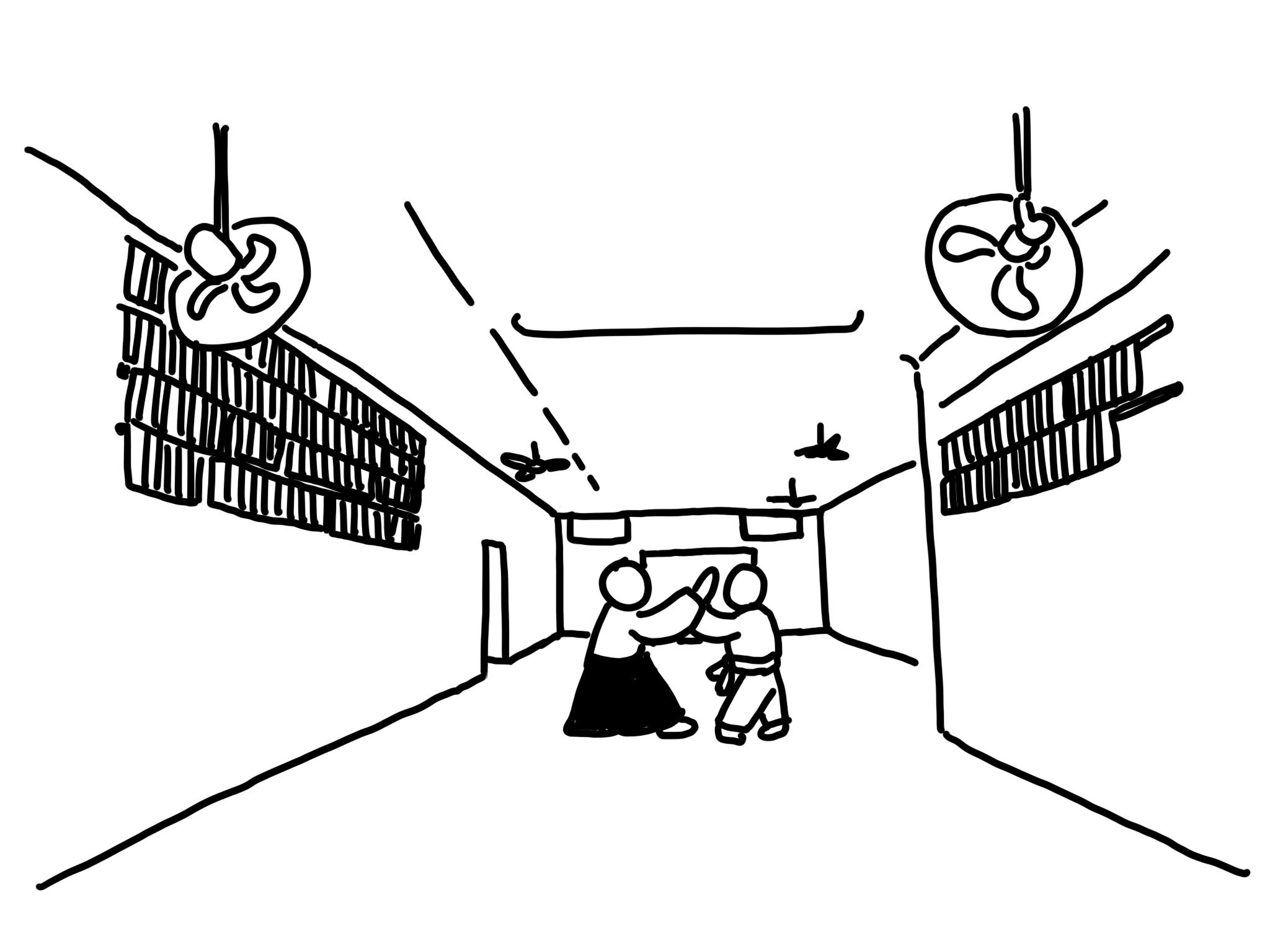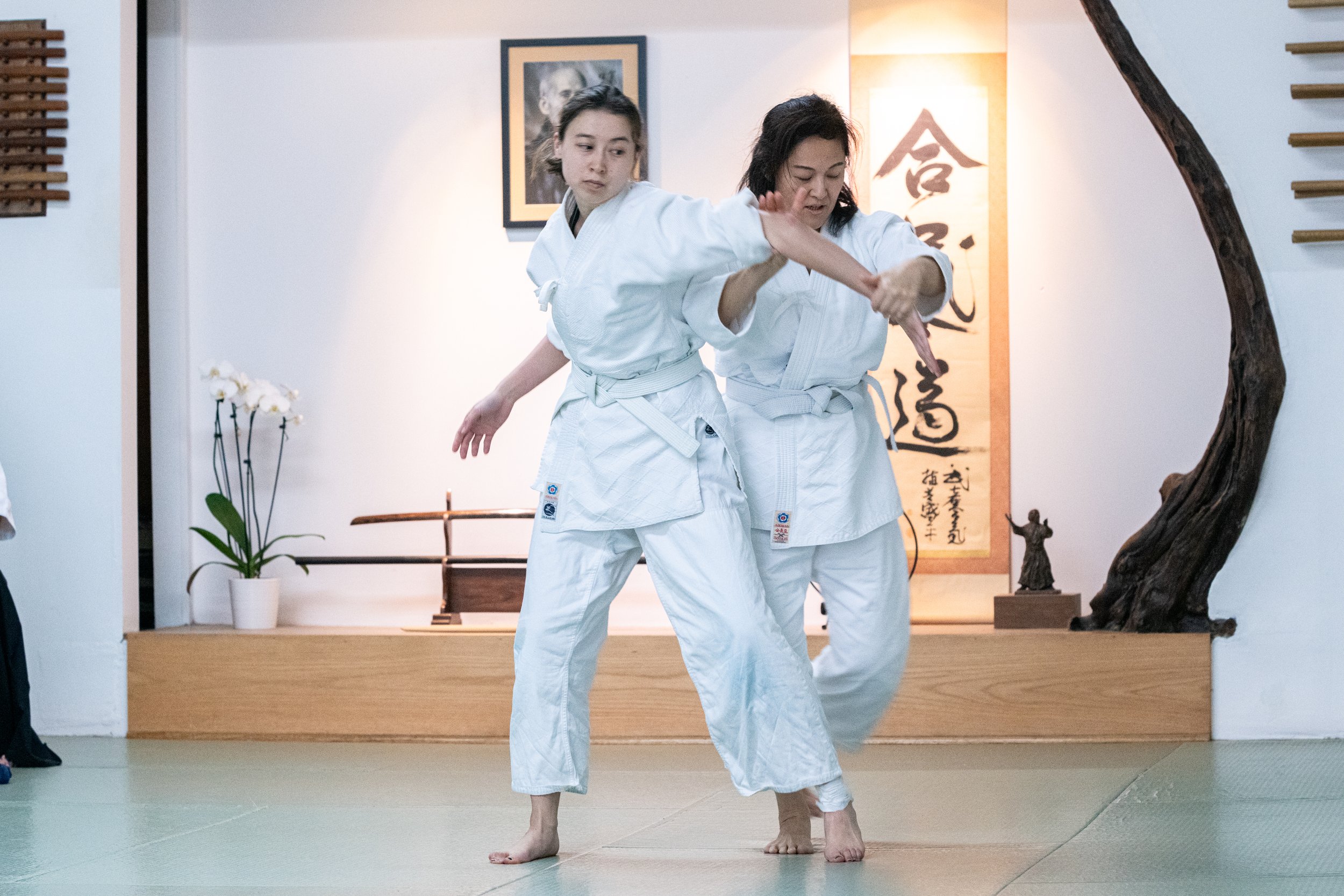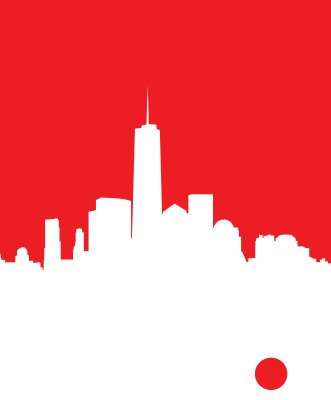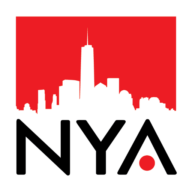Handbook
Welcome to The New York Aikikai
Welcome
We’re glad to have you with us. We’ve prepared this handbook to help get you started on your aikido journey.
-
The New York Aikikai (NYA) has been teaching aikido since 1962 and is one of the largest aikido schools in the world. We are a not-for-profit 5013c educational institution. We are affiliated with Aikido World Headquarters in Tokyo, Japan, through The United States Aikido Federation, the national organization founded by our late Chief Instructor Yoshimitsu Yamada. Yamada Sensei (teacher) was a student of the founder of aikido, Morihei Ueshiba (O Sensei) and was sent to the US to help establish aikido schools in New York City and all along the East Coast.
In 1995, we purchased the building at 142 West 18th St. The building is ours.
For over 60 years, we have been at the same location, in the same building, teaching only aikido. So if it’s aikido you’re looking for, you’ve come to the right place.
-
We are committed to providing a safe, friendly place for you to learn aikido. Whether you’ve been here one day or 30 years, we regard you as part of our community. Our instructors are all high caliber, dedicated aikidoists who volunteer their time to lead classes. You are encouraged to experience them all since each has something unique to offer.
If you experience any uncomfortable or unsafe situation on the mat, please bring it to the attention of the instructor, the chief instructor or any member of the NYA Board of Directors.
Your monthly membership fee entitles you to unlimited classes each month, unlimited classes each day. We did this so you can train to your heart’s content. There are aikido books, videos, blogs, etc. - but you will really only learn aikido on the mat.
-
Train with a good spirit and an open mind. Learn from everyone. Hold regard for the experience of your training partners which may vary greatly from yours. Always treat them well and with respect. Treat the dojo with respect as well; wear a clean gi when you train and keep the dojo and mat area clean before and after class.
There is no competition in aikido. Like a fine blade, you are here to strengthen and sharpen yourself as a human being.



Who’s who
-
Steve Pimsler is our Chief Instructor. You will meet Steve Sensei on the mat and behind the front desk. His responsibilities include teaching basics classes, setting the class schedule, assigning teaching assignments and supervising instruction.
“The New York Aikikai has been my home for 50 years. I hope you will enjoy yourself here as much as I have. Please don’t hesitate to say ‘hello,’ ask me aikido questions and let me know how things are going for you on the mat.”
—Steve
-
We are governed by a board of directors. Directors are all NYA members and serve voluntarily. The Board is responsible for overseeing our fiscal and legal health and is involved in many day-to-day operations of the dojo.
We are financially sustained through:
Monthly membership dues
Individual donations
Merchandise sales from the NYA website (nyaikikai.com) and at the dojo
Rental income from our street level property
In 2024 we also completed a capital campaign to finance needed improvements to our building. We encourage you to read about this campaign by visiting supportnyaikikai.com. While the public portion of the campaign has ended we are still accepting donations toward construction costs.


Ready to roll?
-
We offer classes 7 days a week. The dojo front door will be open one half hour before class times and will be closed one half hour after class concludes. For the complete schedule, go here.
The dojo is closed on all national holidays. Closings will be posted at the dojo, on the website schedule and via dojo email to members.
-
In our dojo routine, it may seem we do a lot of bowing, both standing and sitting. Please regard bowing as display of respect and consideration. We show this respect toward O Sensei (for giving us aikido), our instructors for teaching us and to all our training partners. We are all deserving of respect as people regardless of rank or position at the dojo.
So…
Once you’ve climbed the stairs and enter the dojo proper, you may bow while standing, to the kamiza, a place of honor at the front of the mat that has a picture of aikido’s founder, O Sensei, along with his calligraphy of the word “aikido”.
As you enter the office area and members-only area of the dojo, please remove your shoes, place them on the shoe racks and swipe your membership card at the front desk computer. (We count each day as “1 hour” of training, regardless of how many classes you attend per day. For those members wishing to test for rank, this is how we keep track of your required training hours.) Then, proceed to the changing rooms.
-
We have two changing rooms: men’s and women’s. We also have a single stall restroom in the office area of the dojo that can be used for changing.
Change into your clean gi and remove all jewelry for your protection and the protection of others. If you cannot remove earrings please cover them with tape.
Remember to take your gi home with you after training and wash it out of respect for your training partners.
No gi may be left at the dojo overnight for sanitary reasons.
-
Enter the mat from the entrance on the east side of the members-only area. Bow to the kamiza, standing or sitting, and make your way on to the mat. You may warm up or train with another student before class starts. Don’t be shy, ask another student if you have a technique question or want to work on something specific.
If you are late to class, please wait at the entrance of the mat until you get permission to enter from the instructor. Then bow in and join the class.
-
Everyone on the mat should be sitting in seiza (on their heels) or zazen (cross legged). The instructor will sit in front of the class facing the kamiza. Following the instructor’s lead, we all bow together toward the kamiza. Then the instructor turns to face the class and we bow together. We say together “oh-n’gai-shemas” which means, “please help me learn.”
The instructor will either do a brief warm-up or go straight to demonstrating the first technique. We then bow to our training partner and aikido begins.
-
We generally train with the same partner. However, the instructor may change partners or announce group techniques. Please keep in mind that aikido is a martial art and its techniques are effective and can be dangerous when executed recklessly. That is one reason for all our formalities and our emphasis on respecting the aikido level of your training partners. Once again, if you feel unsafe you may certainly tell your training partner; they may not be aware of your experience level or how intense they are training. If this doesn’t resolve the problem, please let the instructor know.
You will begin by learning basic movements and, most importantly, how to safely fall. At the beginning, don’t get hung up on aikido vocabulary. Let your body learn the moves; the names of techniques will come with time.
That said, there are three helpful terms:
Nage: the person who performs the technique
Uke: the person who initiates the attack
Ukemi: safely responding to the technique by falling safely to the mat
Partner practice: Nage does the required technique 4 times, 2 on the left, 2 on the right. Then nage becomes uke and we repeat the above routine.
It can be a bit confusing to make sense out of the order of how things go while on the mat. The best bet is to follow along, but there are a few more tips for you that might help. The highest ranking person (often to be identified with anyone wearing a black belt, but over time you will begin to learn where you fit in rank) is the person who goes first as nage. In small groups, the highest ranking person is in the front of the line, and then we line up by rank after this. If you are working in a group, the instructor or the highest ranking person provides feedback. Generally speaking it is only the instructor who provides feedback or instruction to students as well. As your experience of training is so different from that of your partners, it serves us all well to just focus on our training, rather than our partners.
All of this said, at the very beginning, just try and follow along, be kind to yourself, and as patient as possible.
-
We often carefully stretch our partner’s back. Then we all sit as we did at the start of class, facing the kamiza. The instructor will lead the bow to the kamiza, turn to face the class, bow, and then exit the mat area. We say together “Arigatto gozai mas” which simply means “thank you.” The class waits for the teacher to be off the mat, then we bow to our training partner(s) and thank them.
-
Immediately after class, we clean the mat for the next class. Push brooms are located in a closet on the mat. First the mat is swept away from the kamiza and a member will then vacuum the dust on the wood floor. Then we spray the mat with a disinfectant and mop up the excess liquid. Try to help out and take pride in keeping the dojo clean, physically and spiritually.


Grading and testing
-
Rank in aikido is achieved through your years of training and personal development. It may be achieved through recognition and recommendation by the chief instructor, or by testing. Our system of ranking is as follows:
Kyu level (below black belt) 5, 4, 3, 2, 1
Dan level (black belt) 1, 2, 3, 4 ,5 ,6 ,7, 8
Shihan (honorific): master teacher
At the New York Aikikai, all kyu levels wear white belts and all dan levels wear black belts and a hakama (traditional Japanese divided kimono)
In this way, we don’t get too hung up on rank. We may recognize rank on the mat but off the mat, everyone must be treated well and with respect.
-
In the past, one’s teacher granted rank based on personal evaluation. As aikido grew in popularity it became necessary to standardize promotion requirements through testing.
Our requirements for testing are established by the USAF Technical Committee. Requirements include the number of training hours and the demonstration of specific techniques. (That’s why it’s important to swipe your membership card each time to come train - it’s the only way we have to verify your training hours!)
Students can apply to test if:
They have the required training hours
They are current on their NYA monthly membership dues
They are current on their yearly USAF dues ($50 a year)
They are proficient in the techniques required for the rank they wish to achieve
Please check with Steve Sensei to verify your training hours before submitting your test application.
Remember — testing is NOT required. It is for your own personal gratification. You are not being judged against other students; only on your own aikido growth and progression.

